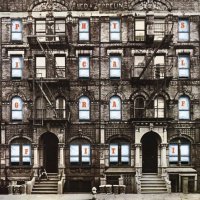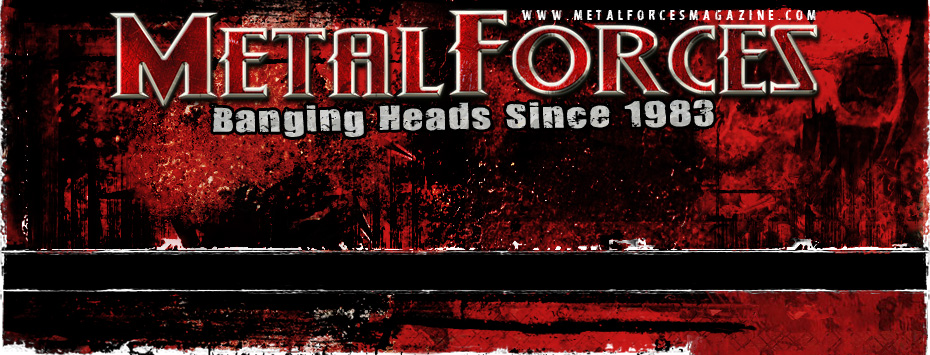
LED ZEPPELIN
Physical Graffiti
![]()
Swan Song (1975)
Rating: 8/10

|
Despite friction within the ranks (bassist John Paul Jones had, allegedly, considered leaving during recording) Led Zeppelin release their longest opus to date, a double gargantuan composition that features some of the band’s best work.
If anything, Physical Graffiti is considered the definitive Led Zeppelin platter, one which seems to encompass every style of the Zep repertoire. The album is a true amalgamation of those smoking, bluesy, breezy folk songs and heavy rock spectaculars, peaking in the staggering eight-and-a-half minute Eastern-influenced ‘Kashmir’; a track so mighty that literally every other Zeppelin track pales in comparison.
Of the 15 tracks on offer, most are upbeat bluesy rockers, boasting that Zeppelin swagger we’ve come to know and love, and featuring Jimmy Page’s hard-edged guitar sound. However, tracks such as ‘Custard Pie’ and ‘The Rover’ lack the pomp that made previous “hits” so immortal. Even so, the lumbering ‘In My Time Of Dying’, with its bluesy twang, is memorable if overlong, clocking in at 11 minutes. But the jarring funk of ‘Houses Of The Holy’ and the shuffling bounce of ‘Trampled Under Foot’ are instantly accessible, the latter chugging like a full-steam locomotive fuelled by the struttin’ John Bonham drum and having more in common with Stevie Wonder’s jarring soul classic ‘Superstition’ (1972) if anything.
Elsewhere, we’re treated to the nine-minute slow-burner ‘In The Light’, with its cosmic opening which builds with simmering aplomb to a psychedelic jam of sorts, with Robert Plant’s vocals caressing Jimmy Page’s trudging riff.
The brief ‘Bron-Yr-Aur’ (which has no connection to ‘Bron-Y-Aur Stomp’ from 1970’s Led Zeppelin III) is merely an acoustic snippet which leads us into the mellow plod of ‘Down By The Seaside’, a song rescued from sessions recorded in 1971.
‘Ten Years Gone’, another simmering cut, builds from a gentle guitar sway and occasional bassy punch. Again, at over eight minutes it’s a cut that is overlong and could have benefited by being a few minutes shorter, and one can imagine how this started out as an instrumental.
‘Night Flight’ is another upbeat rocker. Drenched in organ and kicking drum, it’s pleasing to the ears, but nothing more. However, the last quarter of Physical Graffiti is saved by the hard-hitting groove of ‘The Wanton Song’, which boasts a killer Page riff and swaggering energy, complete with Plant’s throaty yelps of: “Sighing woman in the night, you came took my seed from my shaking frame”. It’s as sleazy as the album gets.
Of the final three tracks, only ‘Sick Again’ rears its head above a bluesy swoon. In fact, it boasts a dirty riff that is pure Zep ’n’ roll, and Bonham’s drums – which for the most part are all too subtle on this opus – are their usual hard-faced self. ‘Boogie With Stu’ and ‘Black Country Woman’ are half-decent tunes, the latter more of a lightweight ditty with its picky acoustic.
And so, after 82 minutes we reach the end, still dizzy from the radiant impact of ‘Kashmir’. Physical Graffiti is very much Led Zeppelin’s White Album (classic 1968 double album from The Beatles) in its diversity, and for the most part it succeeds as a rewarding rock album.
Neil Arnold
<< Back to LED ZEPPELIN Articles
Related Posts via Categories
- LED ZEPPELIN – Coda (1982) | Album / EP Reviews @ Metal Forces Magazine
- LED ZEPPELIN – In Through The Out Door (1979) | Album / EP Reviews @ Metal Forces Magazine
- LED ZEPPELIN – Presence (1976) | Album / EP Reviews @ Metal Forces Magazine
- LED ZEPPELIN – Houses Of The Holy (1973) | Album / EP Reviews @ Metal Forces Magazine
- LED ZEPPELIN – Led Zeppelin IV (1971) | Album / EP Reviews @ Metal Forces Magazine
- LED ZEPPELIN – Led Zeppelin III (1970) | Album / EP Reviews @ Metal Forces Magazine
- LED ZEPPELIN – Led Zeppelin II (1969) | Album / EP Reviews @ Metal Forces Magazine
- LED ZEPPELIN – Led Zeppelin (1969) | Album / EP Reviews @ Metal Forces Magazine
|
|





